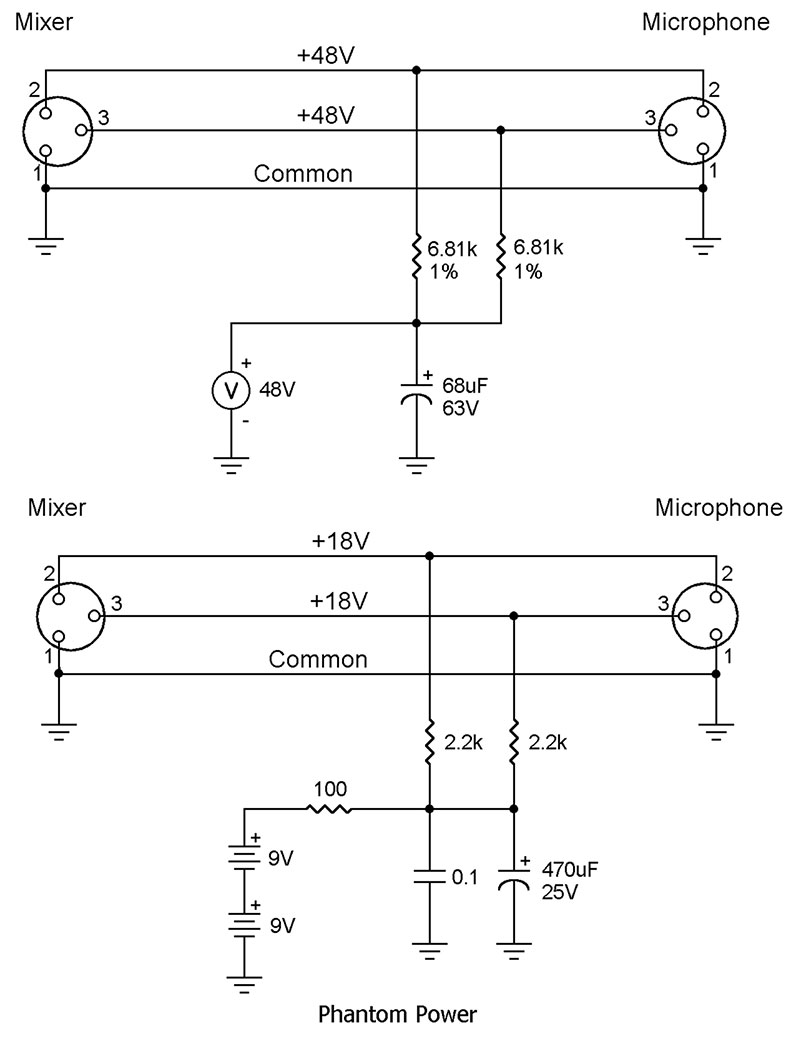With TJ Byers
Phantom Power
Question:
Do you have a phantom power supply schematic? I have a 15K to 600 ohm transformer with a center tap on both sides.
Bill Bushing
via Internet
Answer:
The underlying concept of phantom power only works if you have a balanced transmission line -- like those used with XLR connectors in professional audio equipment, such as mixer panels. In this application, there are two wires that carry a differential audio signal. By using differential — or balanced — transmission lines, the noise that the signal may encounter on its way from the source to the destination is easily removed.
This technique is very popular in the digital world. The professional audio world goes it one better by wrapping the two wires (typically a twisted pair) in a metal braid or shield to further prevent unwanted interference from stage lights and other production related equipment. This adds an extra wire to the power supply formula. If we were to apply an identical voltage to both of the signal wires, no DC current will flow across them. Hence, it leaves the AC signal across the lines unbiased and unaffected. Now remember that we have a metal shield surrounding these wires — a metal conductor that's capable of passing current. Ah, phantom power! If we connect the positive leg of a power source to the balanced pair and the negative leg to the shield, we have current flow without disturbing the current balance in the signal pair.
The phantom power is injected into the signal cable as shown below.

The resistors typically limit the short-circuit current to about 8 mA. This protects the power supply and hopefully the mic from an incorrect connection — which can easily happen. There is no set standard on the phantom voltage or wiring. It ranges from 9 to 48 volts (plus a T-power configuration), and unless you know for sure what you're plugging into, there is a risk of equipment damage. The circuit shown above (top) represents typical values for a 48 volt line; (bottom) shows a battery-operated, 18 volt phantom power source. The figure shows how the signal and power sources are separated at the microphone end.


Comments